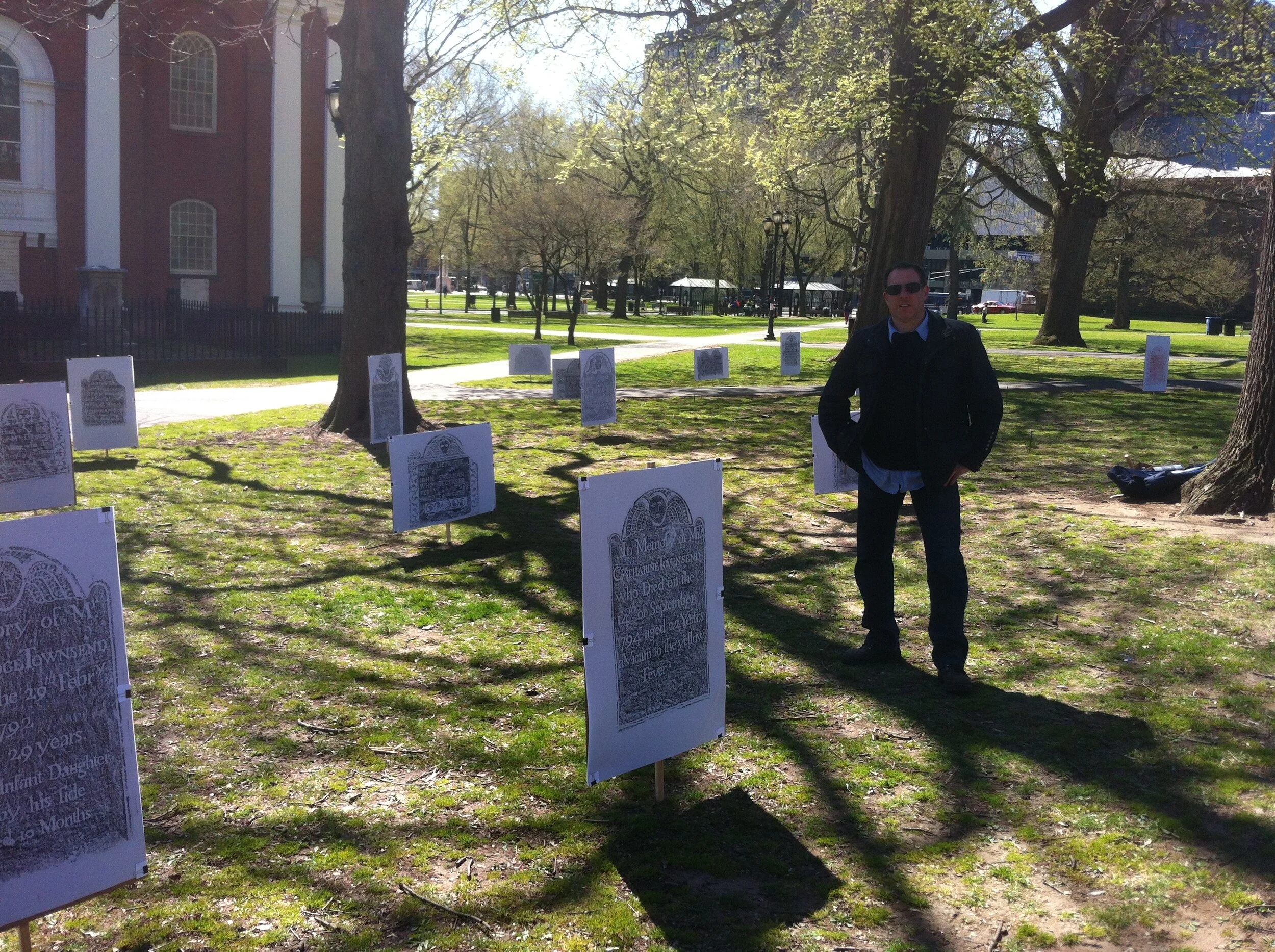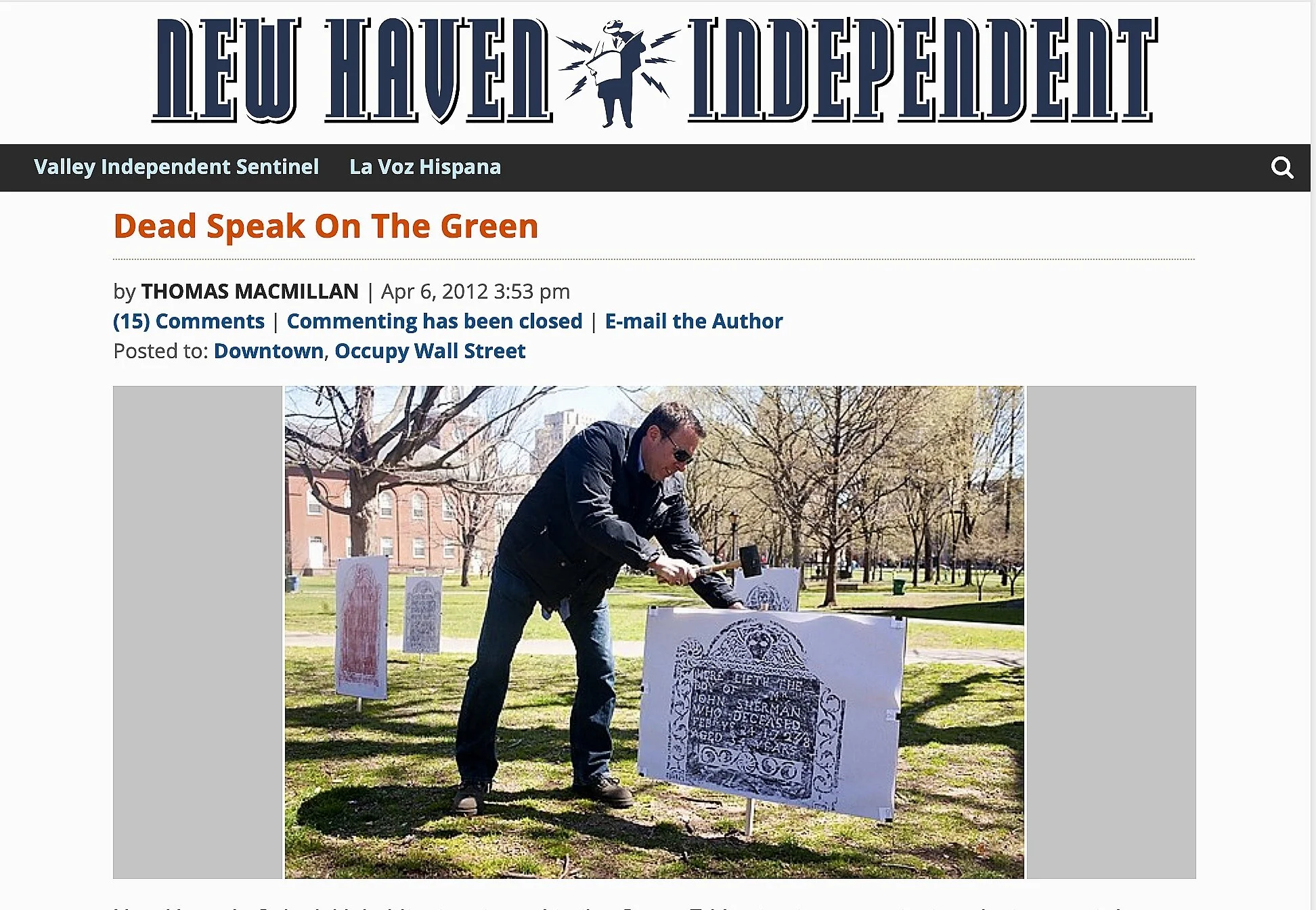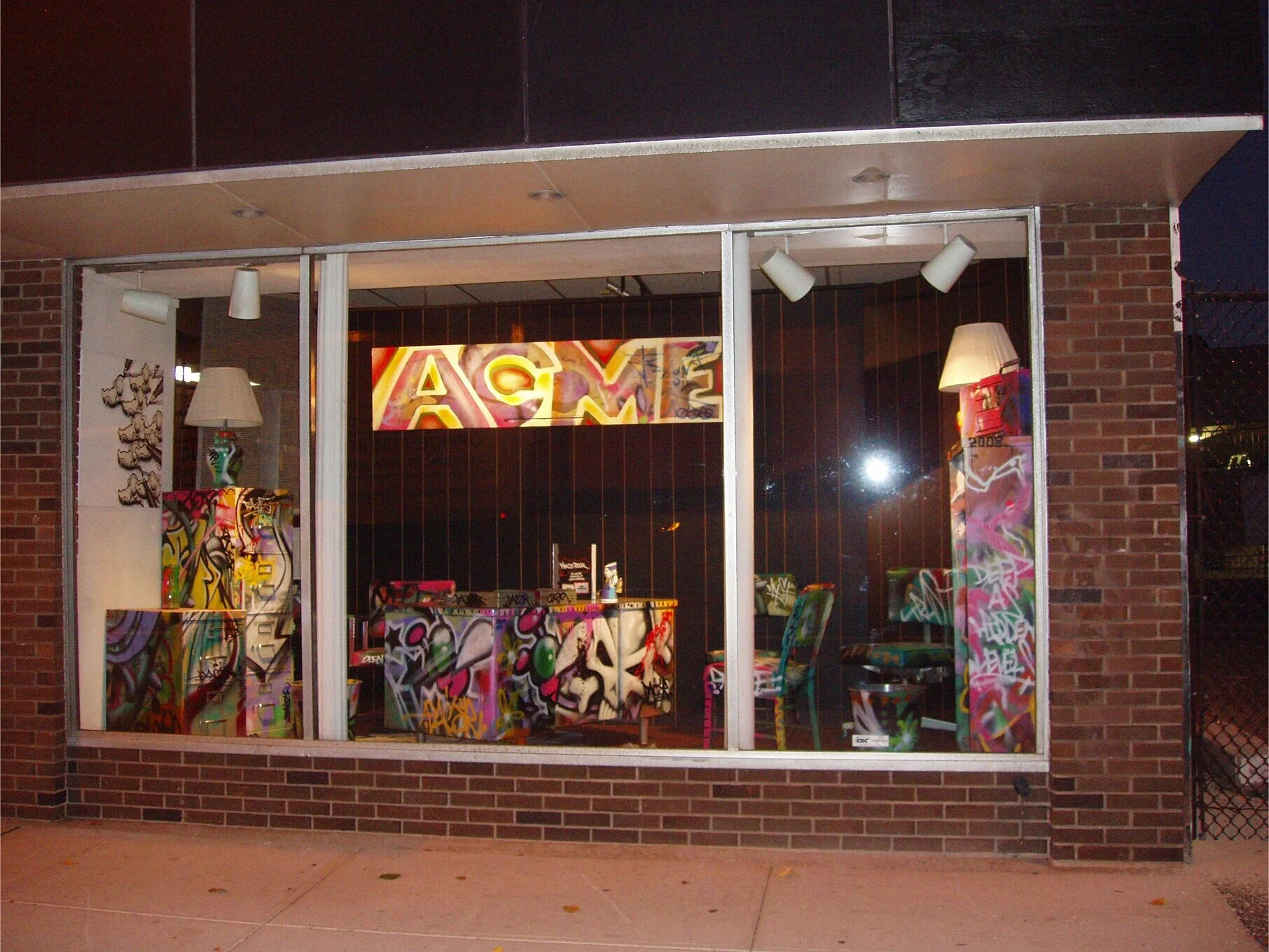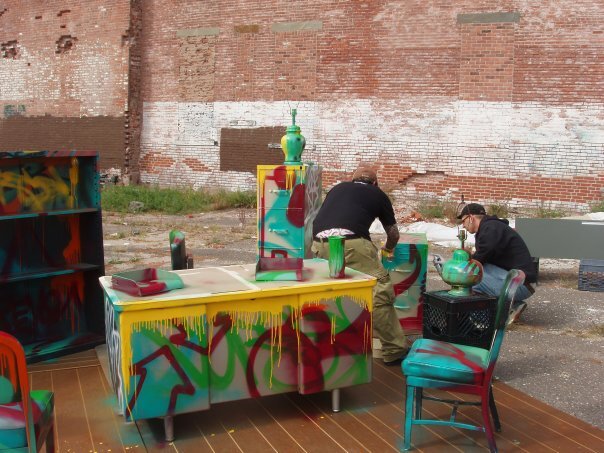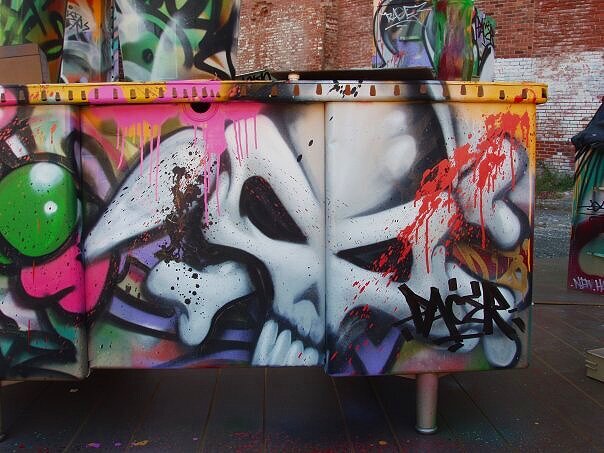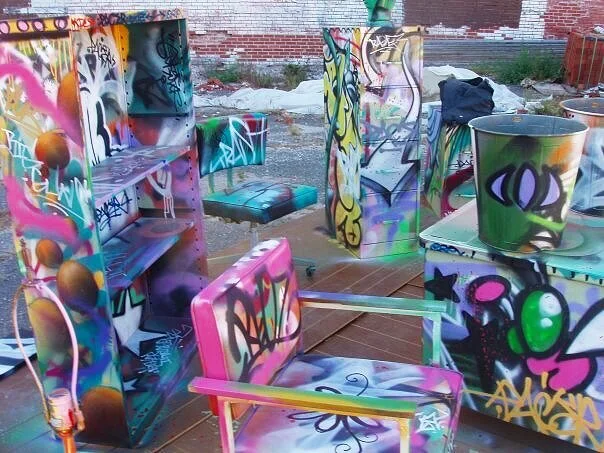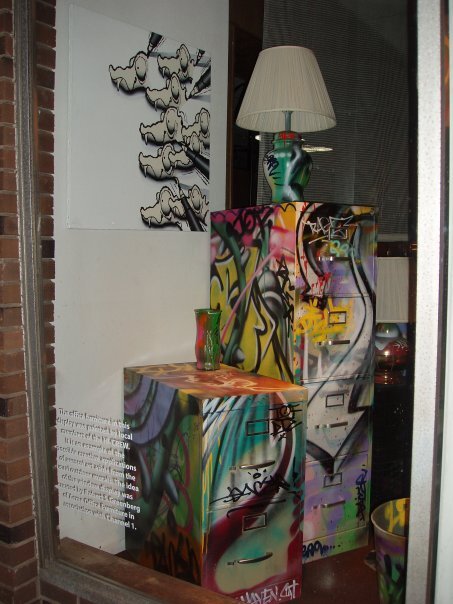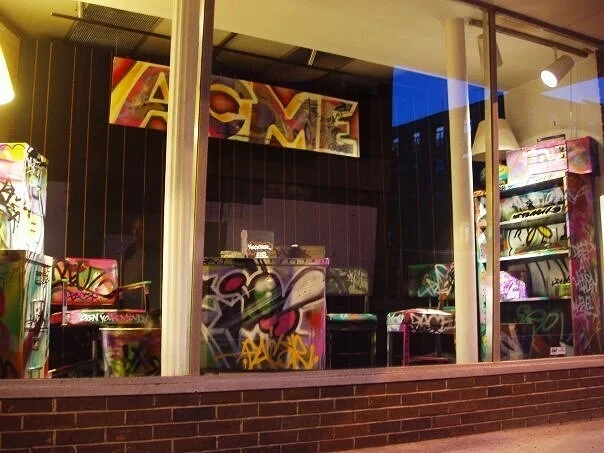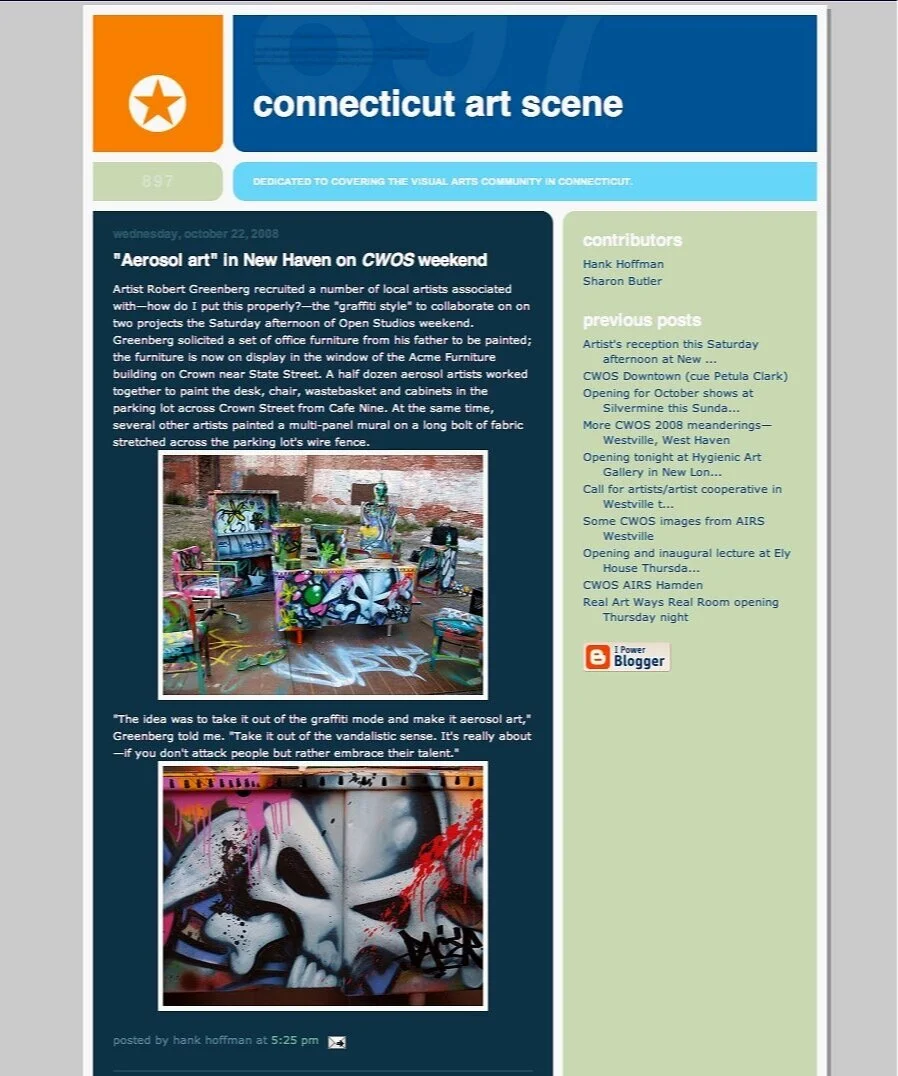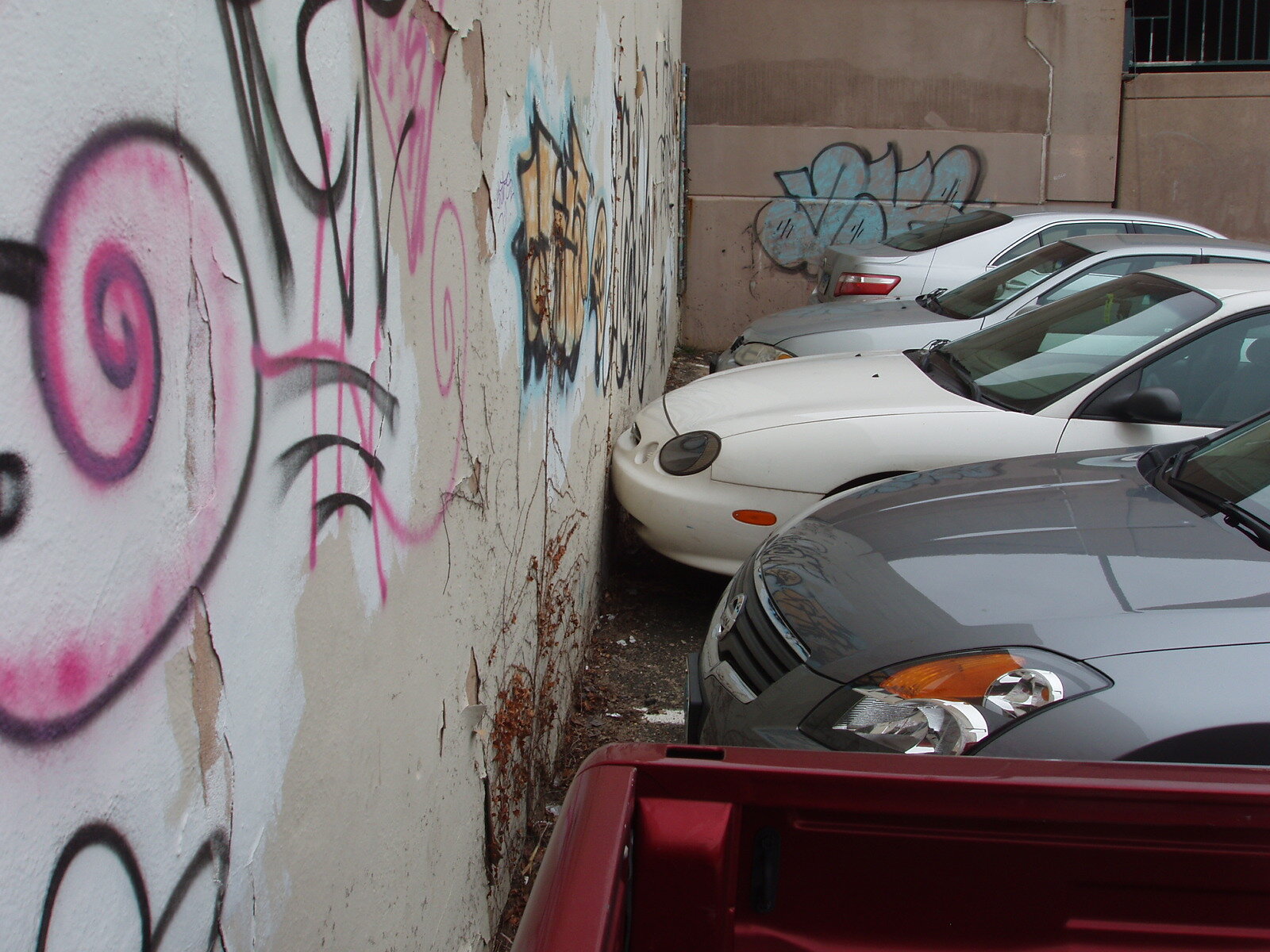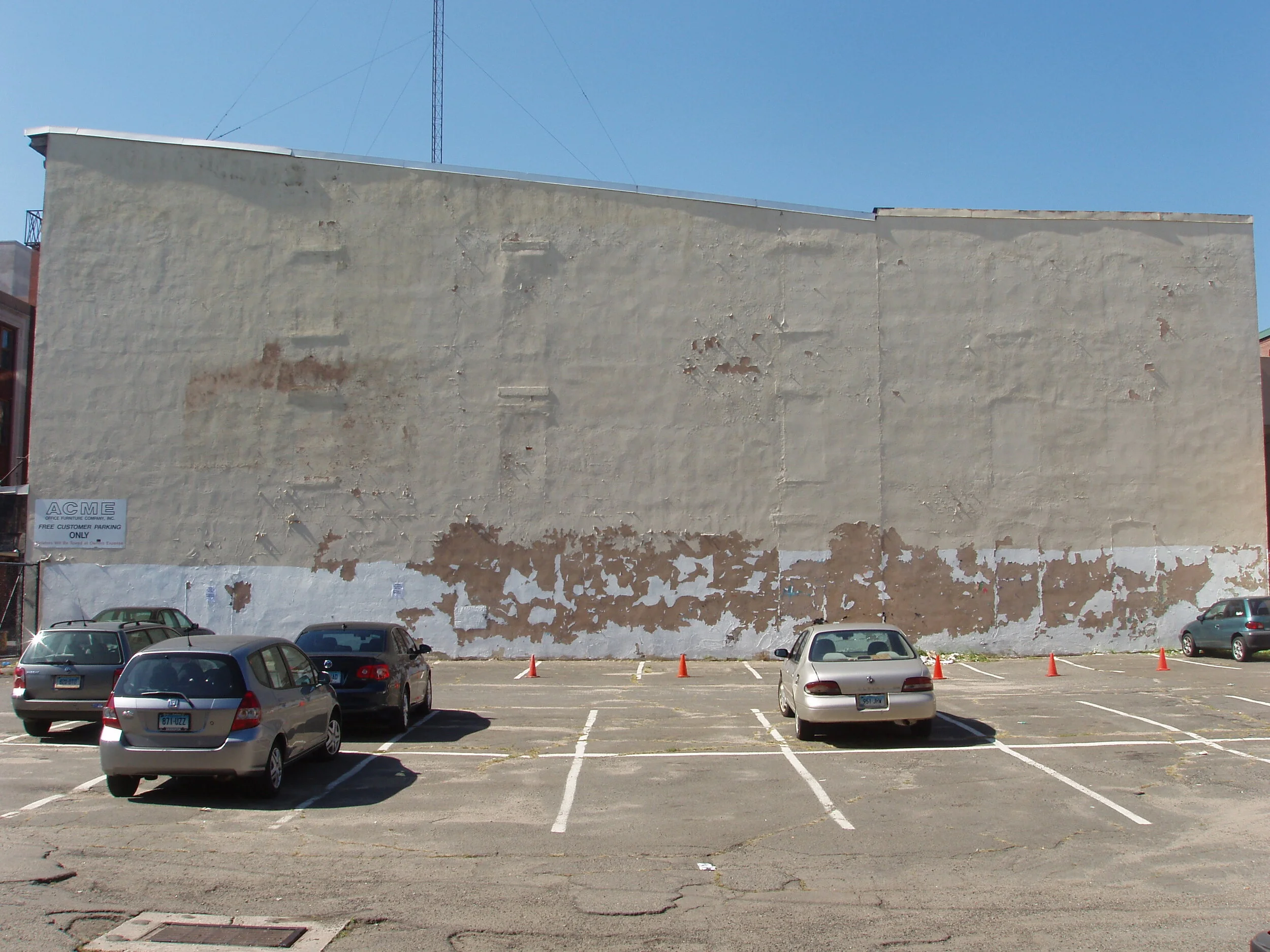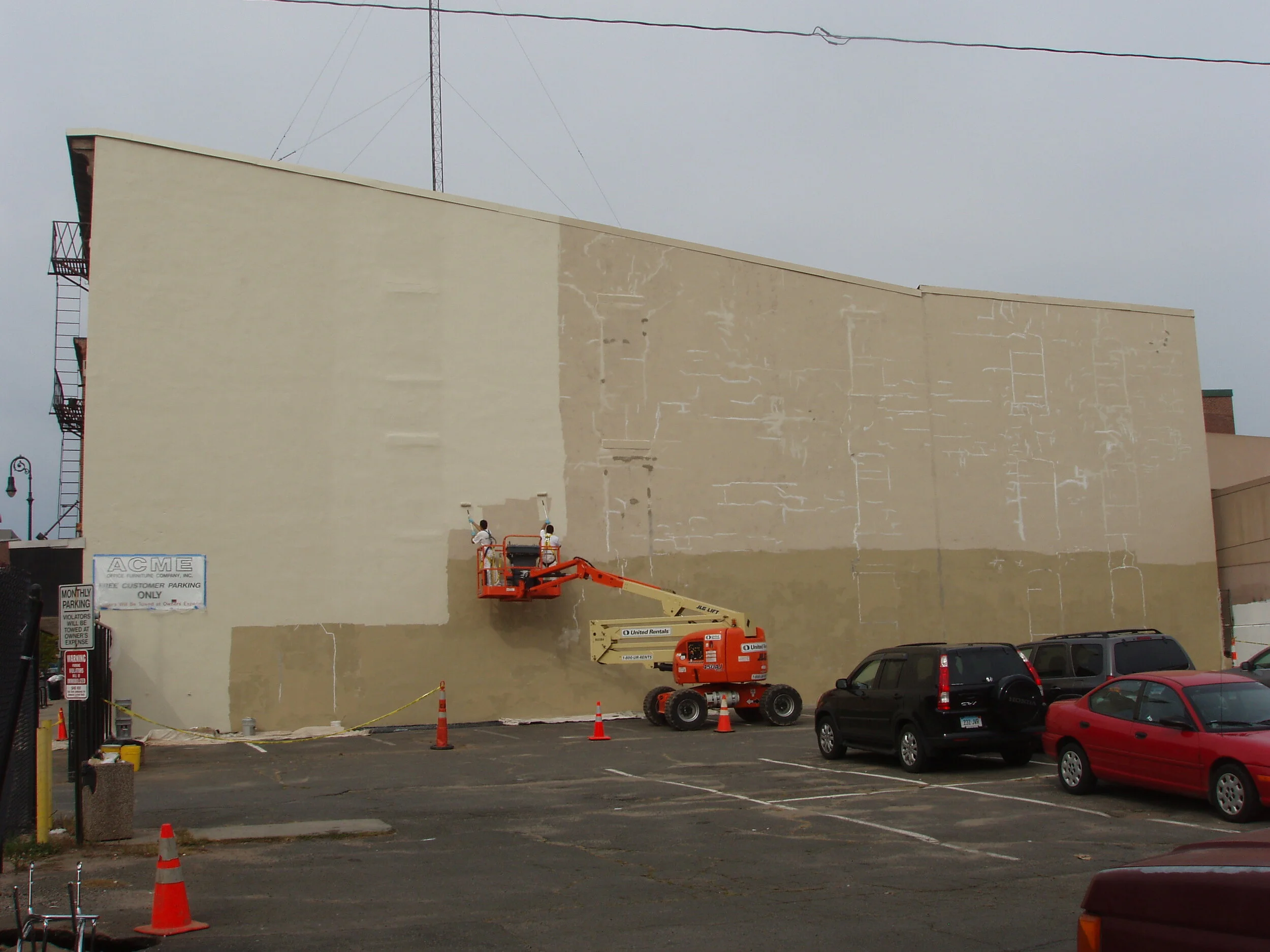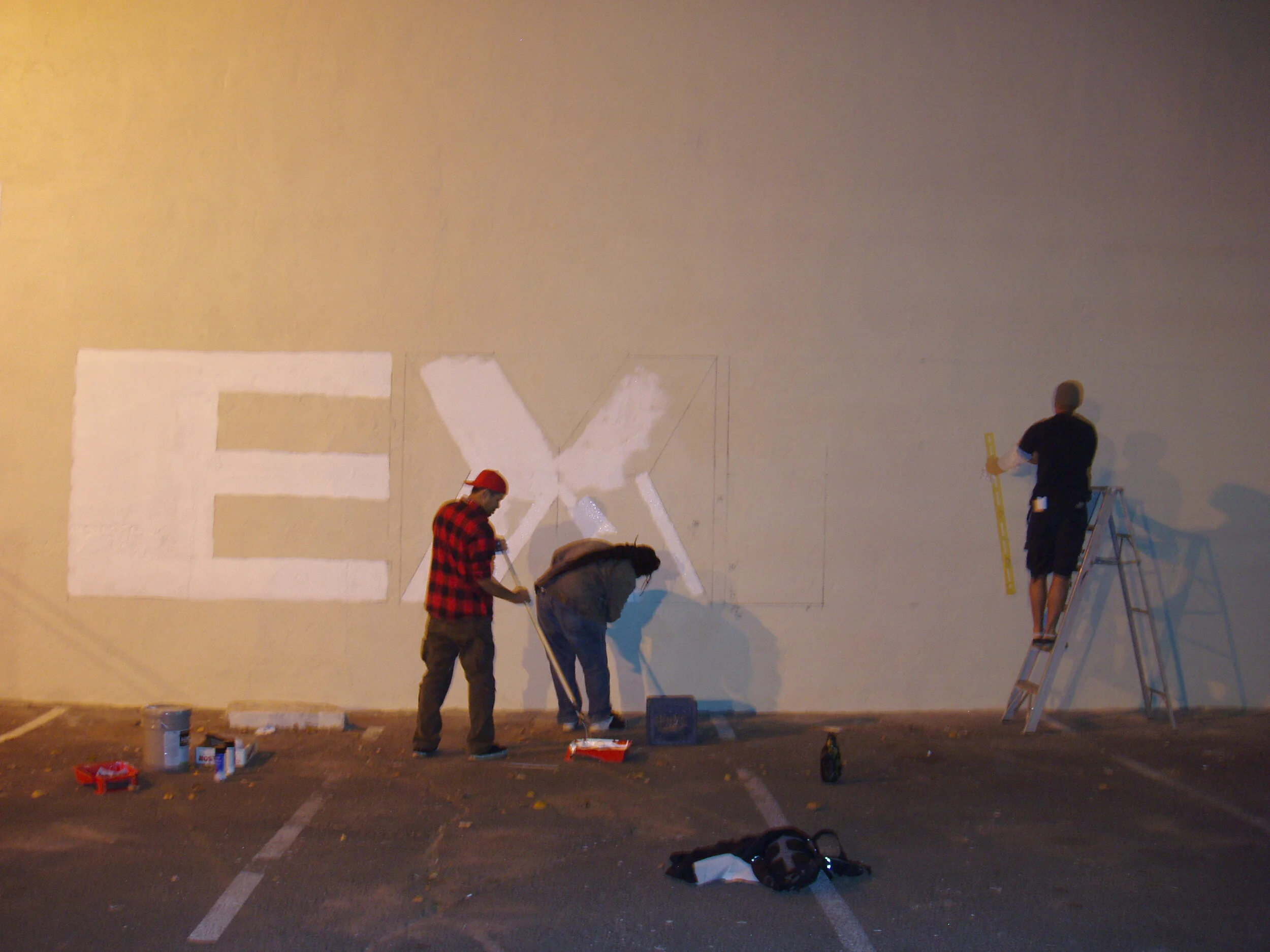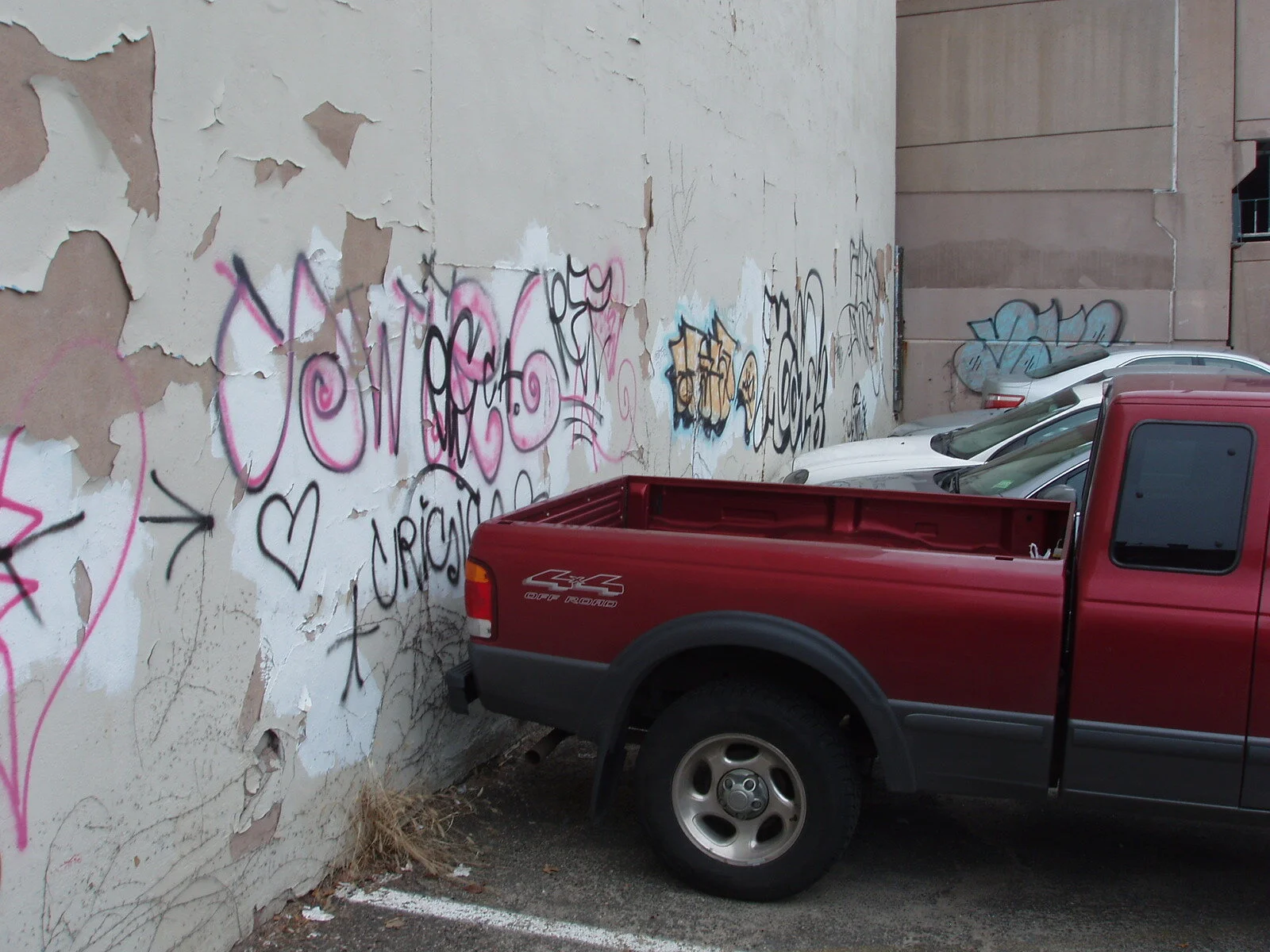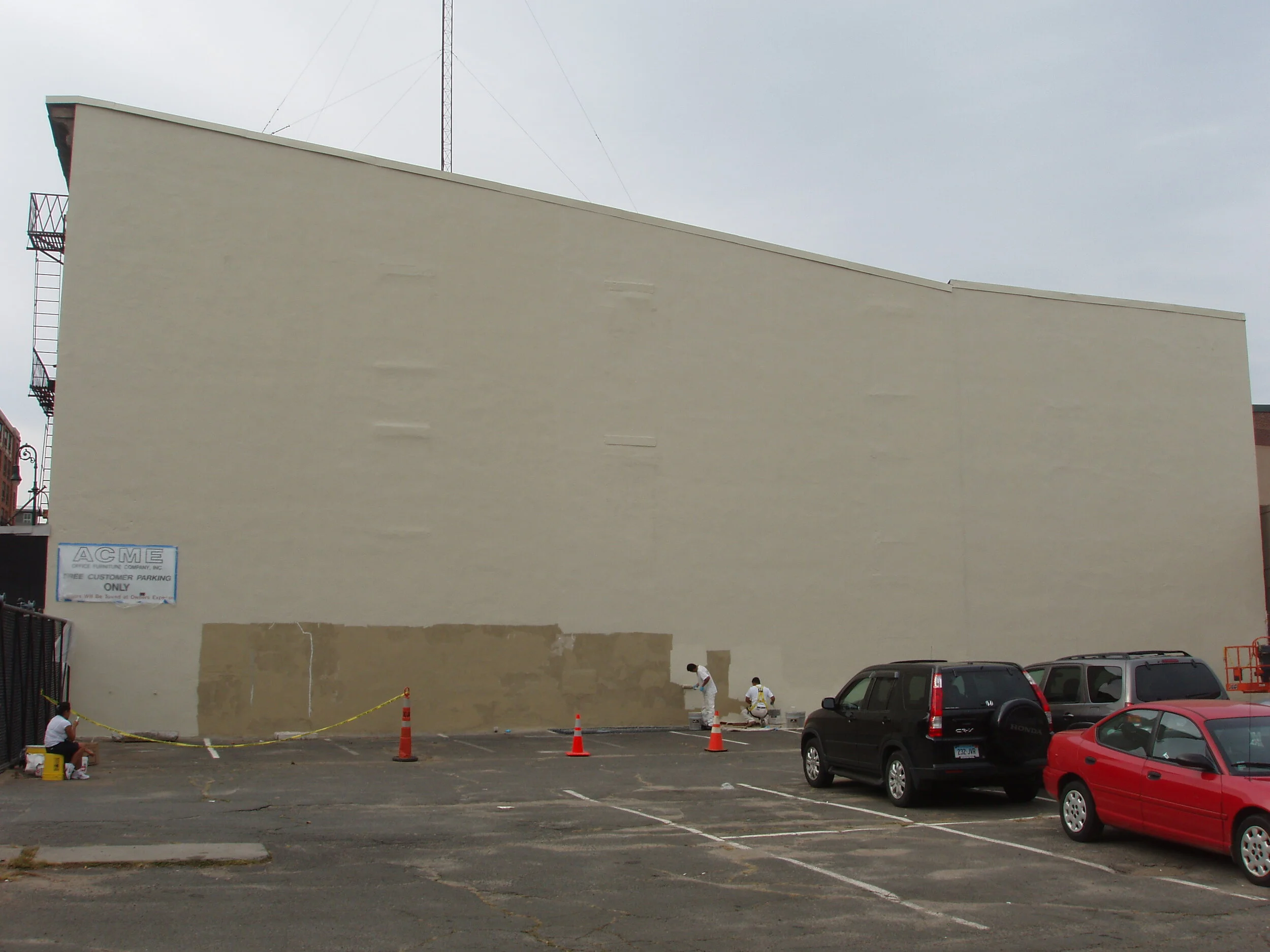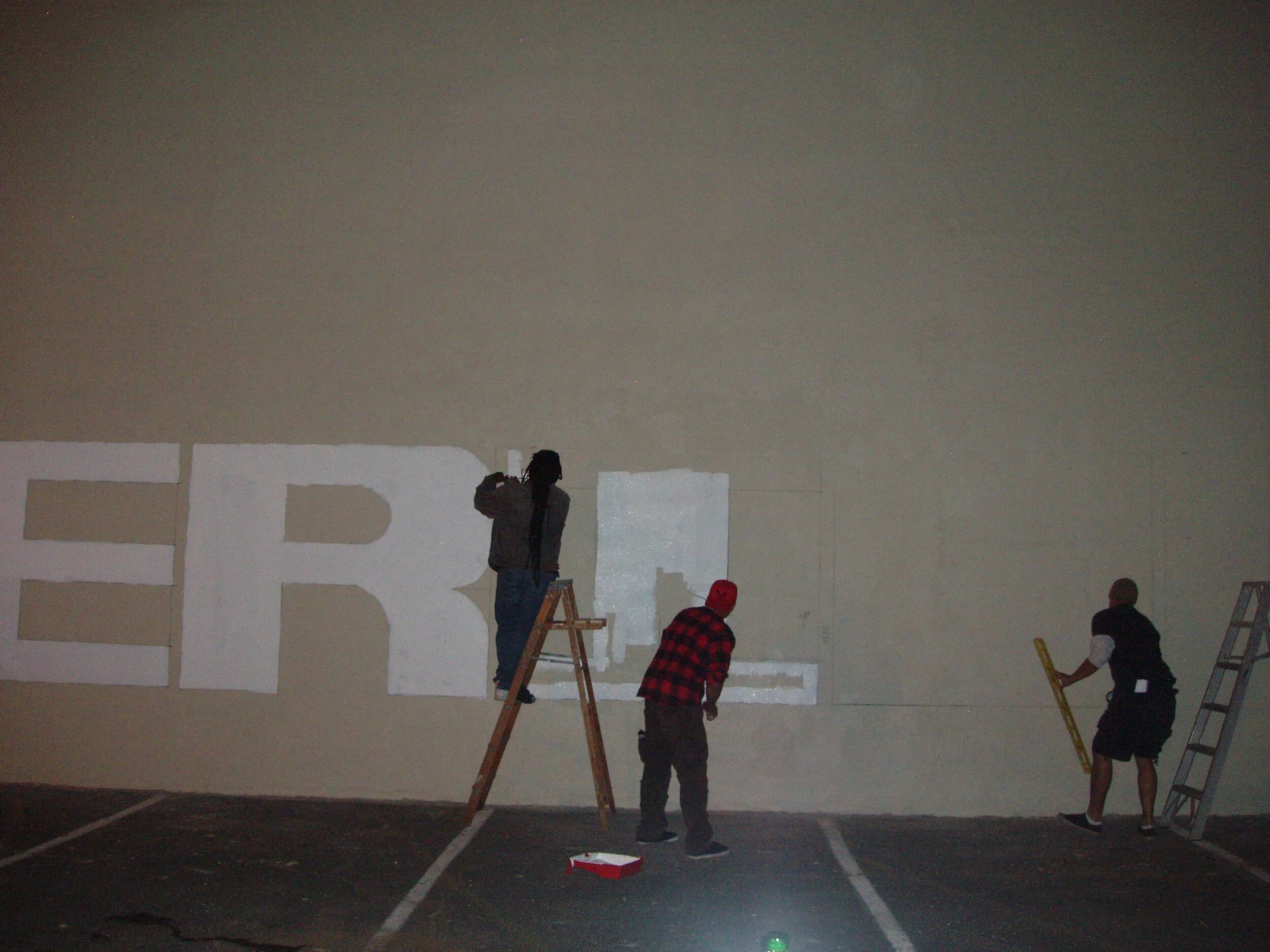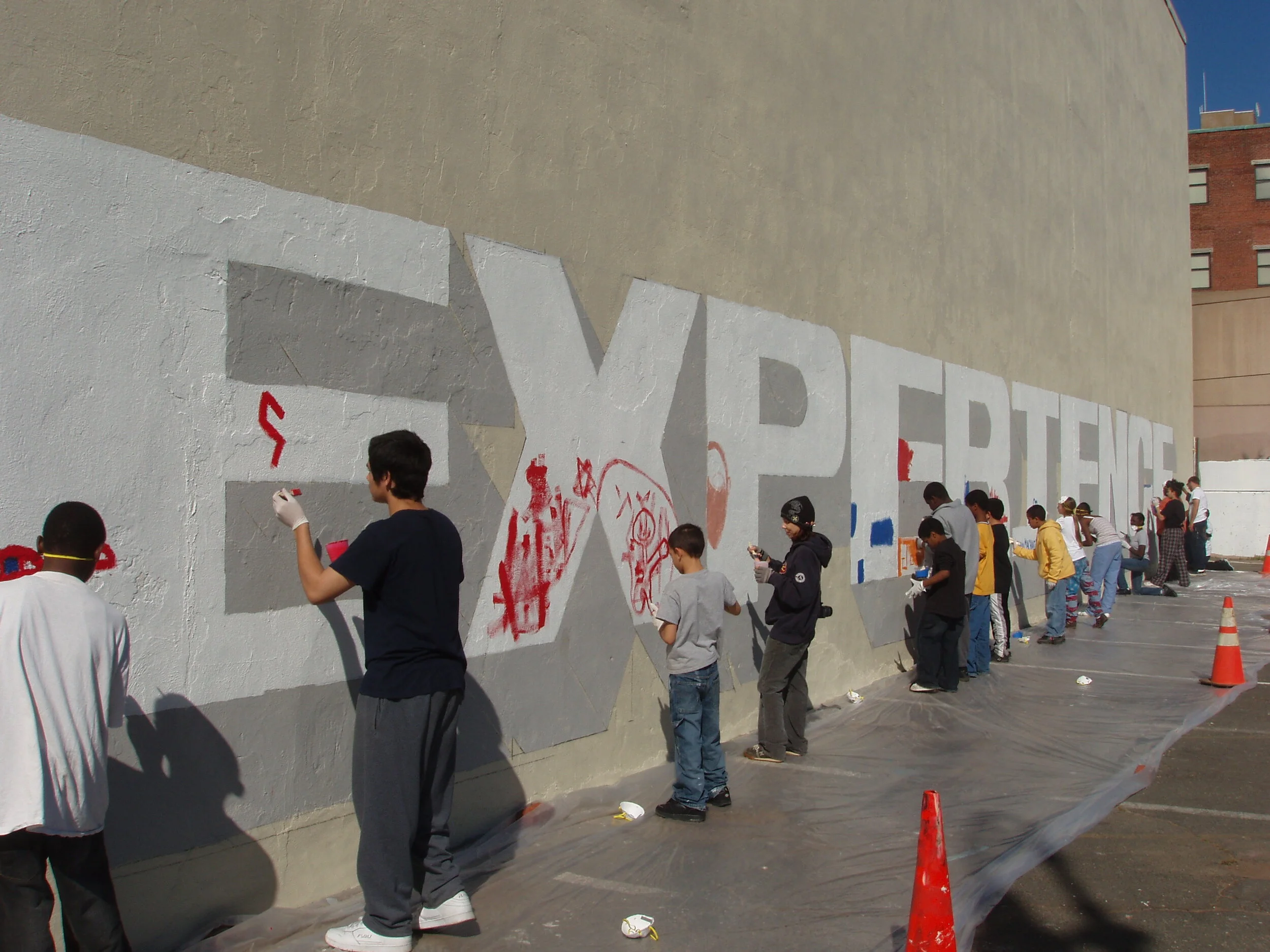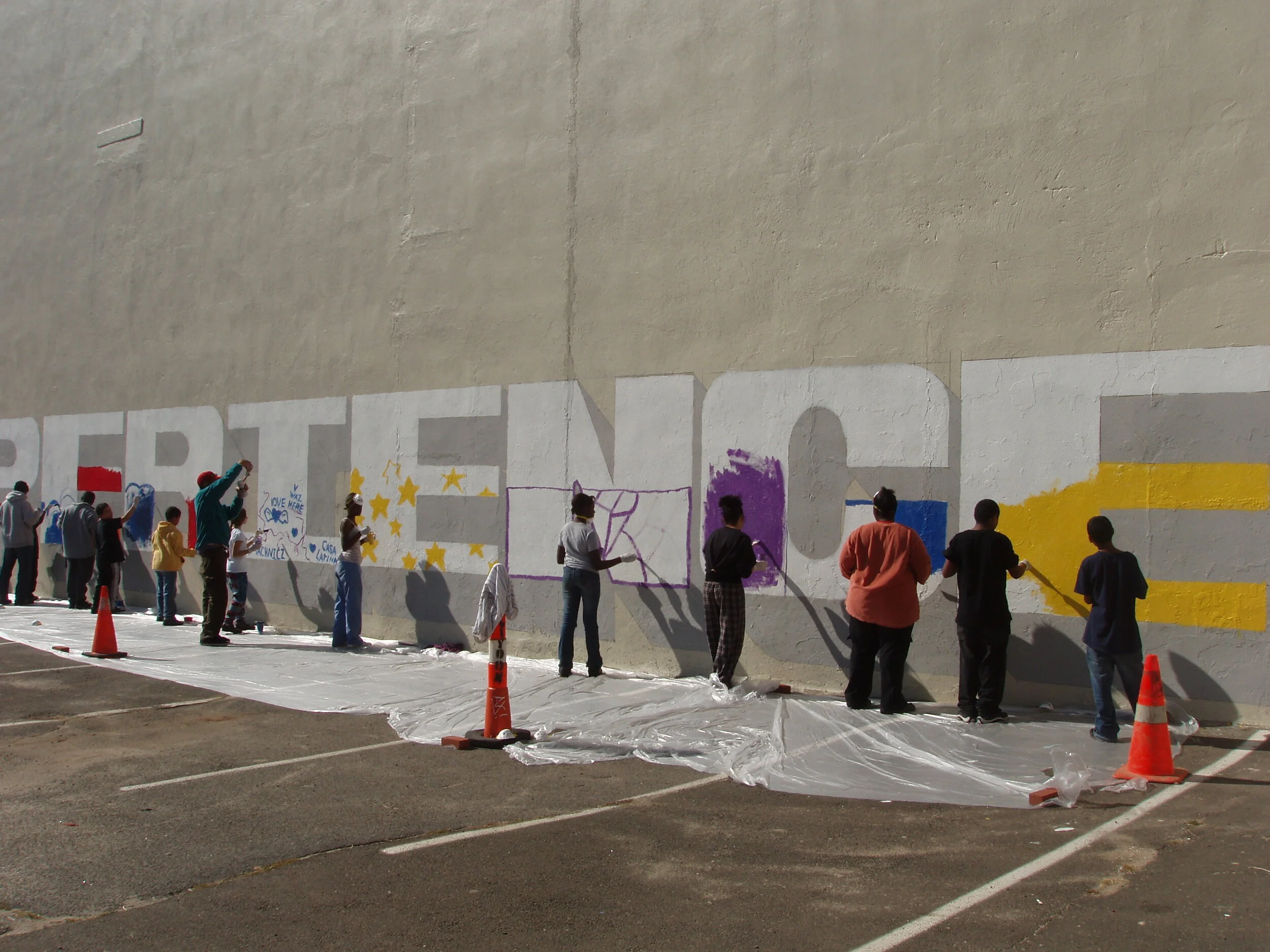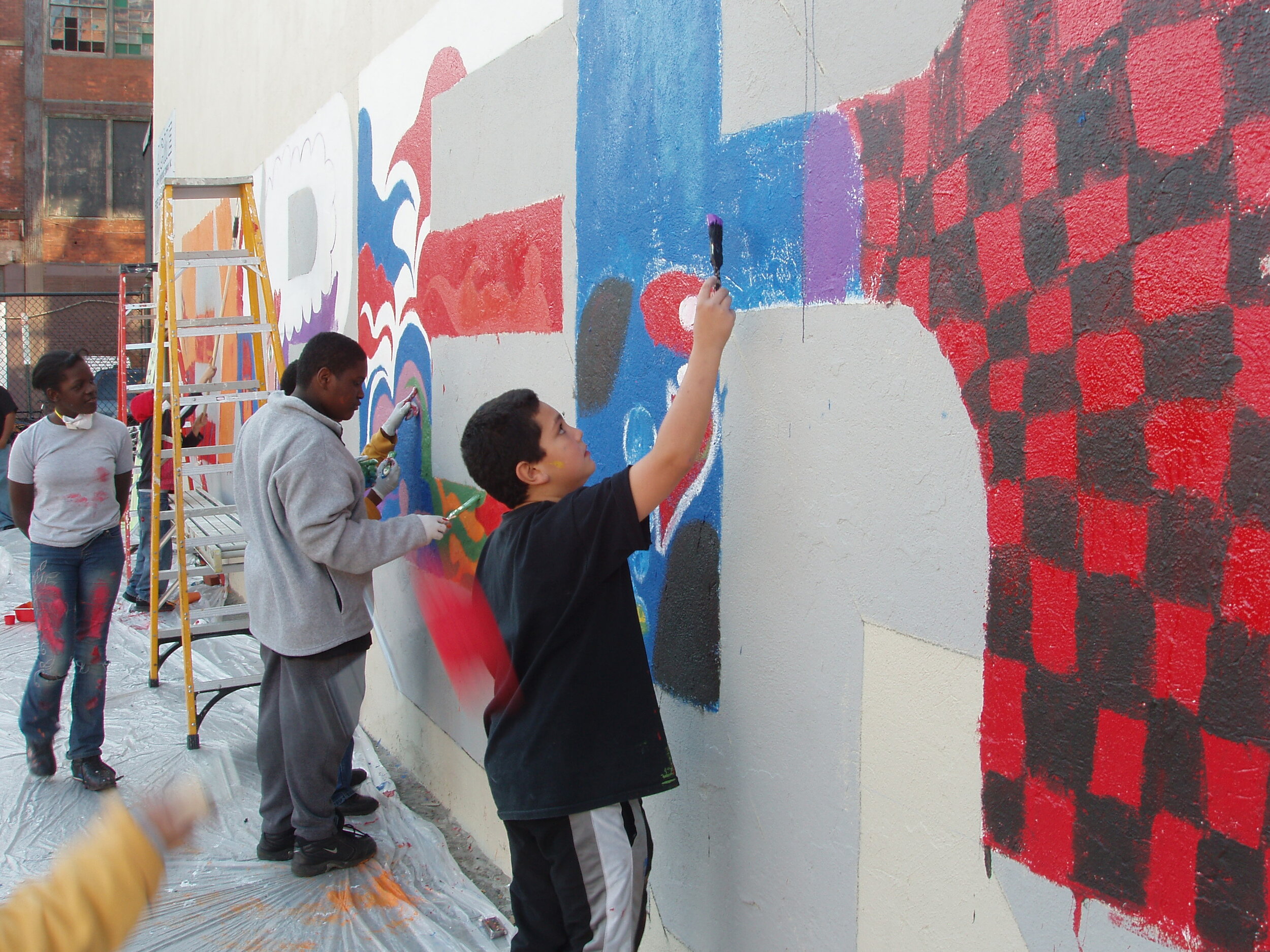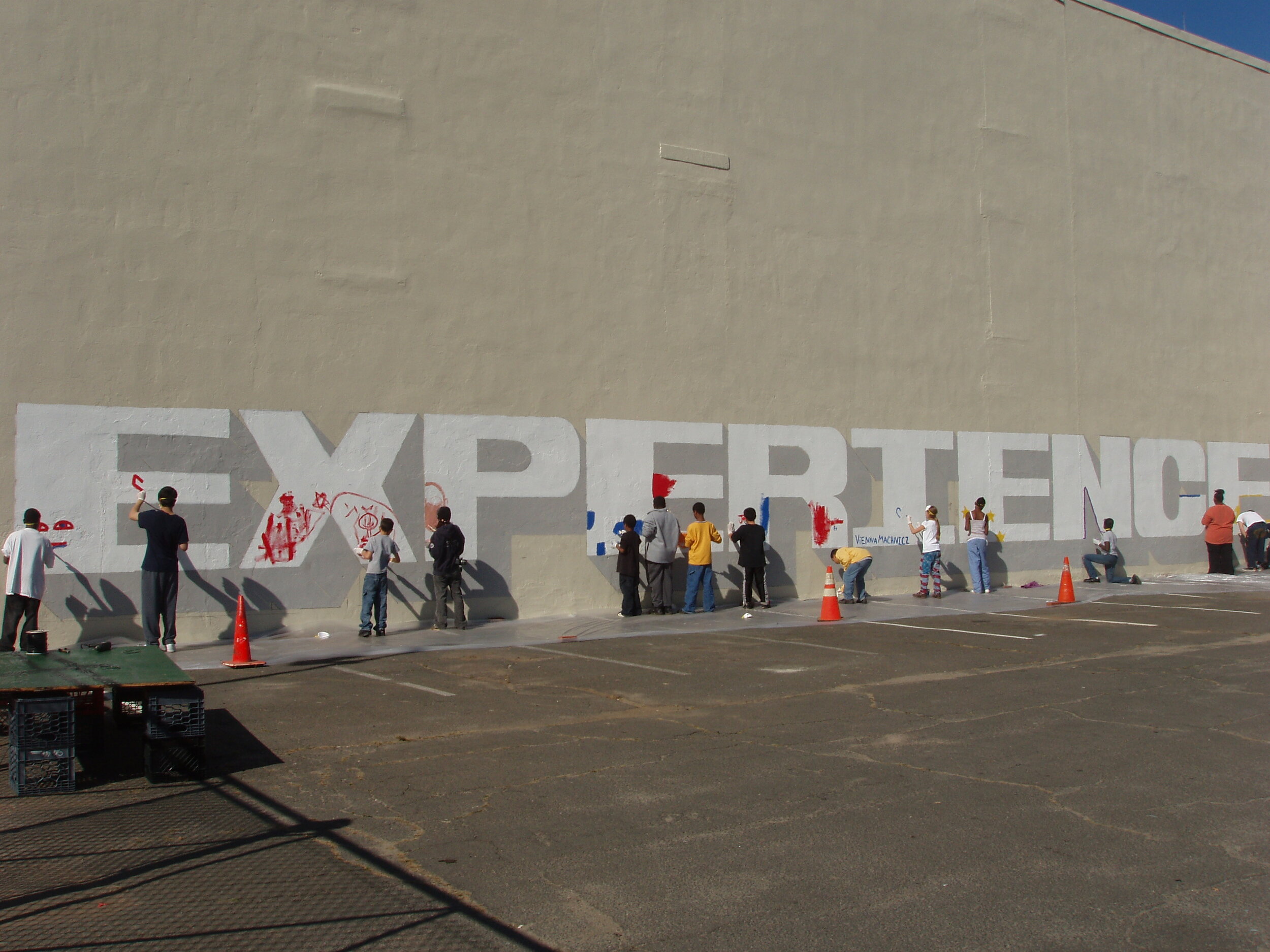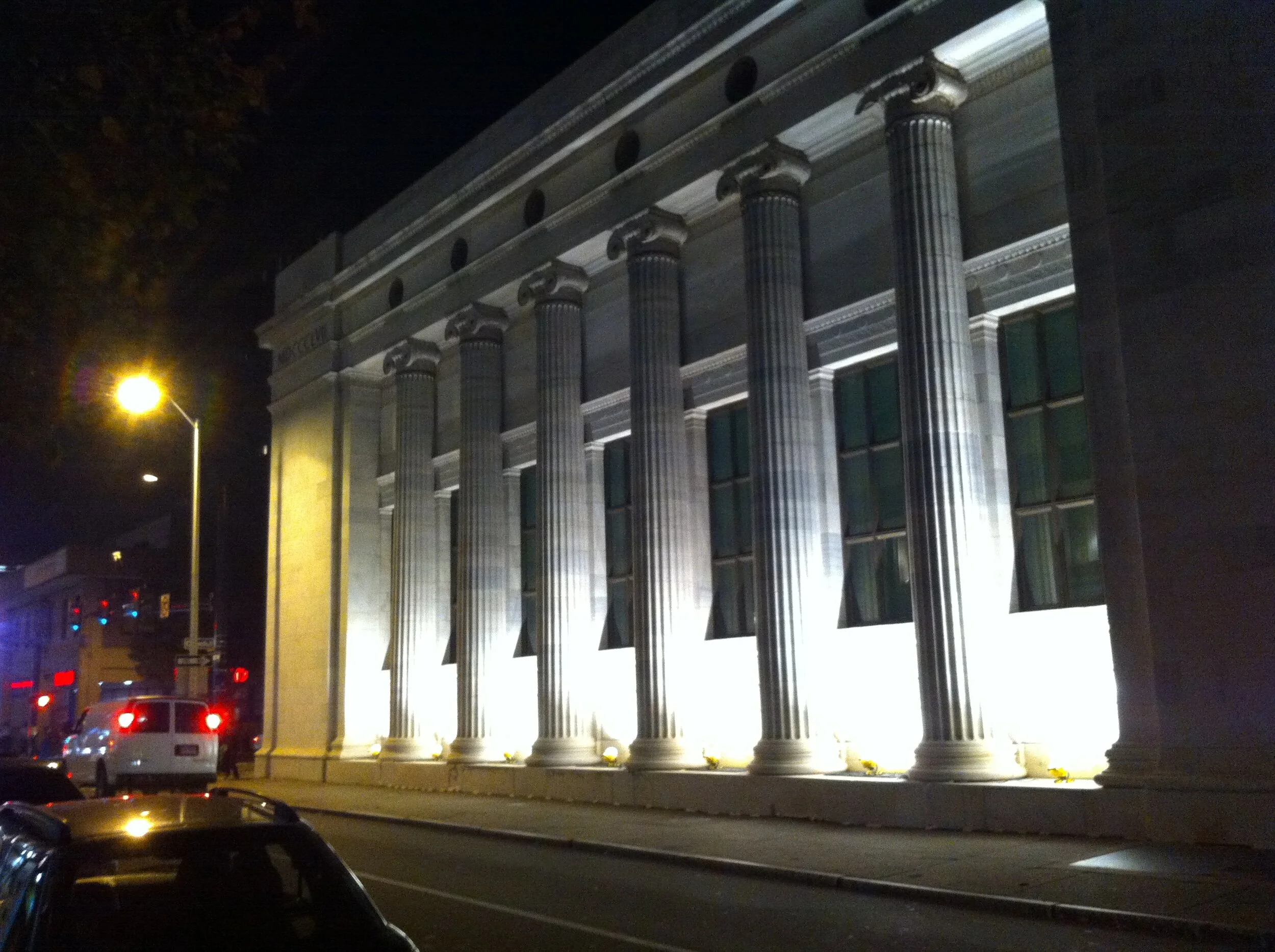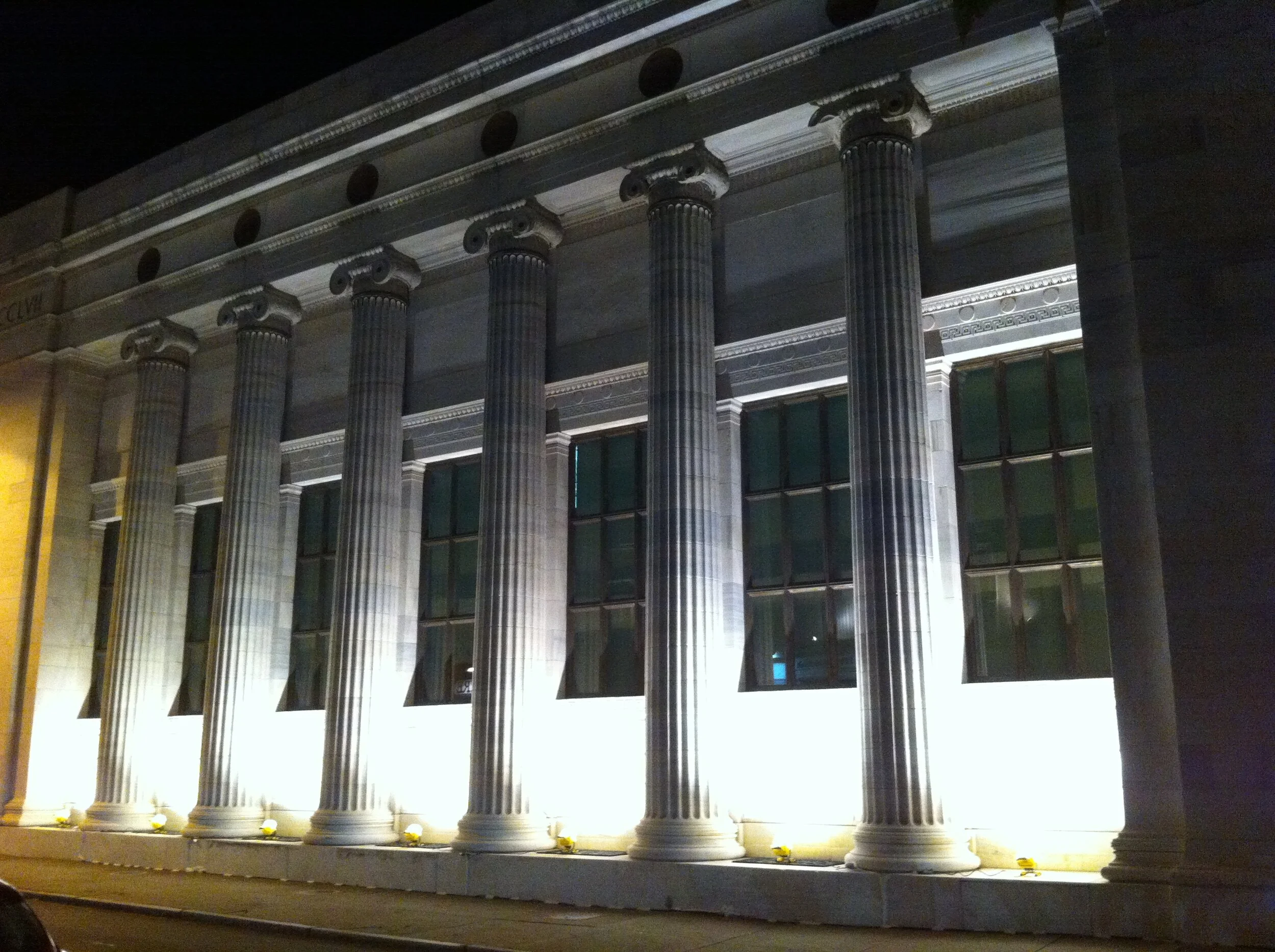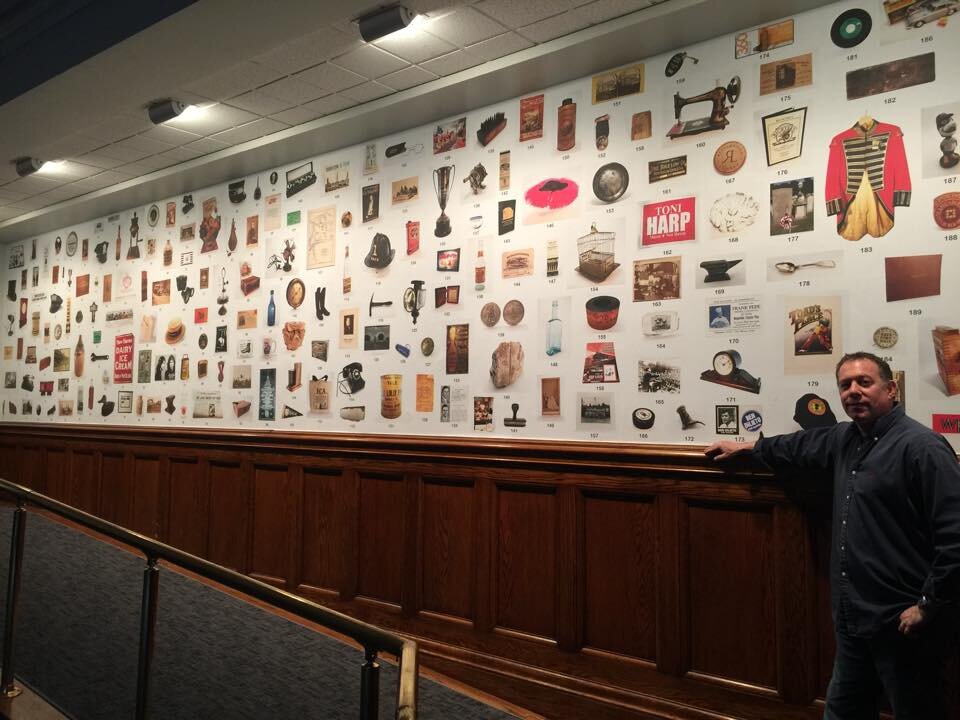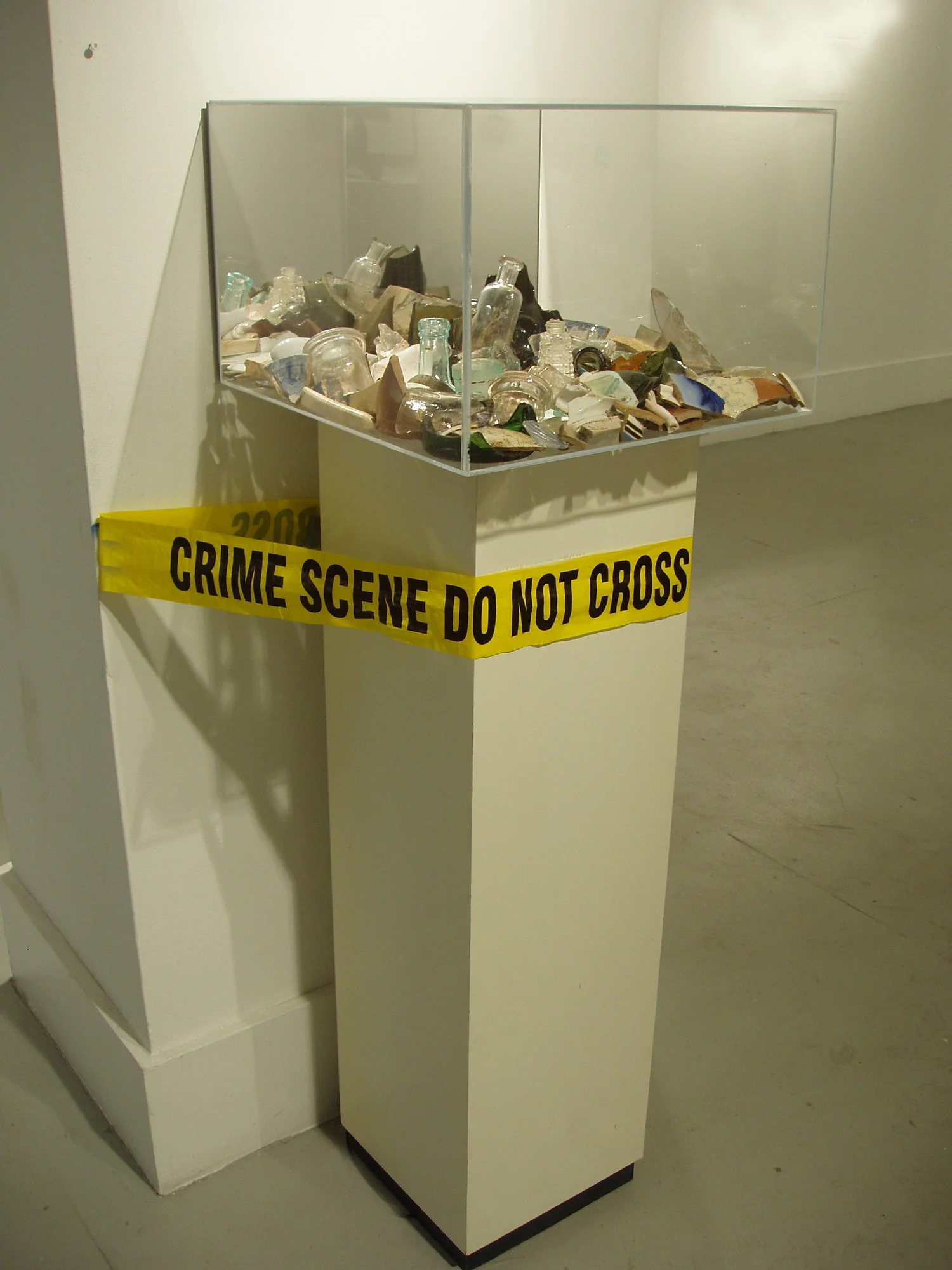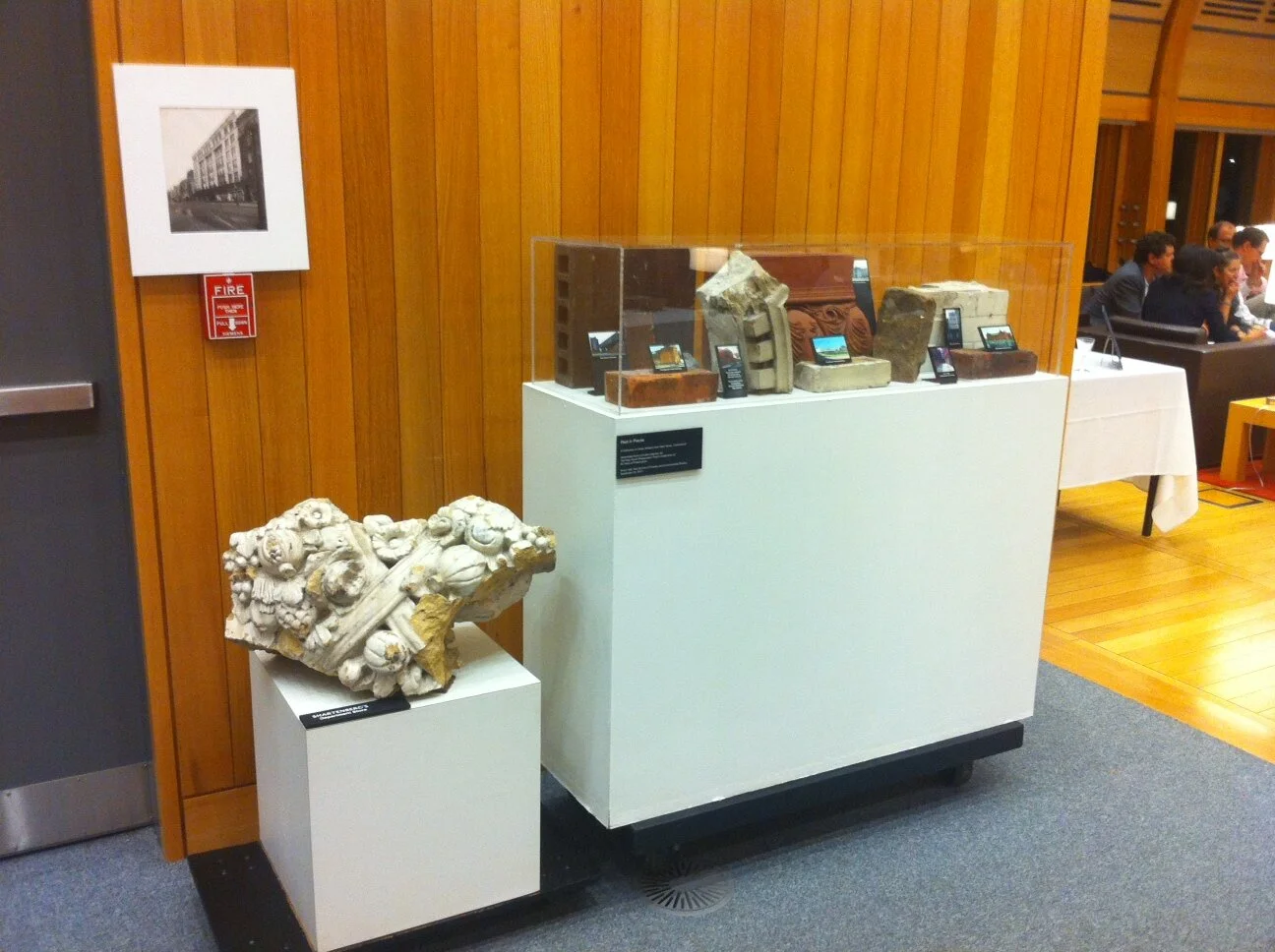In Grove St Cemetery rubbing the original Gravestones from the New Haven Green which were removed in 1821 by James Hillhouse. The stones were relocated to the Grove St Cemetery with permission of any family living at the time, however most of the the remains of the the original settlers and early colonists were left in their original burial ground on the upper New Haven Green.
ACME furniture Graffiti window
Office furniture painted by New Haven Aerosol artists for installation in ACME windows on 33 Crown St. Furniture used as example to city youths as to application of "graffiti / aerosol style" on objects. As opposed to random vandalistic tagging. The EXPERIENCE mural on the wall was a concept created by Lou Cox from Channel 1 in New Haven with the wall of the ACME building donated by me. It gave local youths the ability to express themselves artistically using the location as their canvas of communication. This helped their artistic self esteem and value as a viable artistic voice in the community. The project proved to be a great success and it enabled Lou to further the concept in other locations throughout the New Haven community.
““The idea was to take it out of the graffiti mode and make it aerosol art” Greenberg told me. “Take it out of the vandalistic sense. It’s really about—if you don’t attack people but rather embrace their talent.” —- connecticut art scene”
Experience Mural on the ACME Furniture Co building wall at 33 Crown St, New Haven, CT. 2008
the Experience mural
“New York artist Rob Greenberg, grandson of Joseph Greenberg, founder of then Acme Moving & Storage Co., talked his father Alan, into “donating” the wall. It’s really about the children being able to express themselves he said, adding he will document the project in time-lapse photography, which he hopes will give Cox and others a portfolio to acquire funding for future projects. Greenberg, 45, a product of New Haven Public Schools, says his Educational Center for the Arts portfolio is what got him into Rhode Island School of Design. In his early days in New York, he saw graffiti artists like Keith Haring and Jean-Michel Basquiat transform from street to legitimate artists.”
The LAMP Festival
Made in New Haven artifacts mural: the Hall of Records
The Hall of Records in New Haven CT. Made in New Haven Wall of 203 artifacts
Artifacts dug on Water St in New Haven Ct. Location of the Business High School off Brewery St which was the area of the 18th century sea captains homes and the early colonial coinage mint. This installation was for City Wide Open Studios and it was a sculpture about the criminal destruction of early New Haven artifacts by developers building on the early inhabitants land and disregarding the immense history that they represent.
The Lincoln Tree.
An installation called “Rest in Pieces” for the New Haven Preservation Trust’s 50th Anniversary celebration. The exhibit contained fragments of buildings that were lost during urban renewal, the 1970s and recent structures such as the New Haven Coliseum and the Yale Boat House. The large white terra-cotta piece on the lower left was from the great Shartenberg’s Department store that was on Chapel St and destroyed in 1958. This fragment was unearthed when the 360 State St apartment building was built on the 30+ year dirt parking lot where the historic building once stood. Other fragments include: A red terra-cotta ornate piece from the original NY NH and H Railroad building that once stood where the New Haven Police Dept is today. A white glazed brick from Malley’s Dept Store on Church St, White brick from Spectors Jewelry store on Chapel St, A cobble stone from the Crown St and a few more bricks from buildings destroyed in the area. This is part of a collection numbering in the hundreds of fragments of destroyed structures in New Haven.


